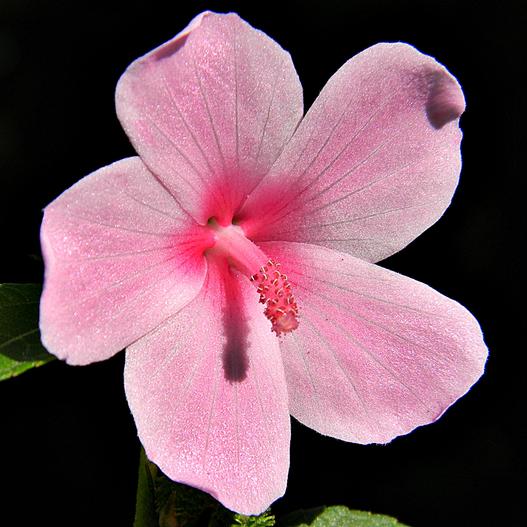Caesarweed
(Urena lobata)
Caesarweed (Urena lobata)
/
/

Bob Peterson
CC BY 2.0
Image By:
Bob Peterson
Recorded By:
Copyright:
CC BY 2.0
Copyright Notice:
Photo by: Bob Peterson | License Type: CC BY 2.0 | License URL: https://creativecommons.org/licenses/by/2.0/ | Uploader: bob in swamp | Publisher: Flickr












































































Estimated Native Range
Summary
Urena lobata, commonly known as Caesarweed or Congo jute, is a tender perennial shrub or subshrub that is native to tropical regions of Africa, Asia, and Australia, often found in disturbed sites, along roadsides, and in agricultural areas. It exhibits variable growth, typically ranging from 0.5 meters (1.6 ft) to 2.5 meters (8.2 ft) in height. The plant’s stems are covered with minute, star-like hairs and often display a purple tinge. Caesarweed grows as a single stalk with bushy stems branching out. The leaves are palmately lobed with tiny hairs, similar to the stem. Its pink-violet flowers are about one centimeter wide and bloom throughout the year in its native range, adding a modest ornamental value. The hairy fruit can adhere to clothing or fur, aiding in seed dispersal.
Caesarweed is adaptable to a variety of conditions, thriving in full sun to part shade with medium water requirements and soils with medium drainage. It is not commonly cultivated but may be used for fiber in its native range. In non-native regions, it can become invasive, particularly in places like Florida, where it disrupts local ecosystems. Gardeners should be cautious and check local regulations before planting. Urena lobata has no notable disease problems, but its invasive potential should be considered a significant issue when grown outside its native habitat.CC BY-SA 4.0
Caesarweed is adaptable to a variety of conditions, thriving in full sun to part shade with medium water requirements and soils with medium drainage. It is not commonly cultivated but may be used for fiber in its native range. In non-native regions, it can become invasive, particularly in places like Florida, where it disrupts local ecosystems. Gardeners should be cautious and check local regulations before planting. Urena lobata has no notable disease problems, but its invasive potential should be considered a significant issue when grown outside its native habitat.CC BY-SA 4.0
Plant Description
- Plant Type: Herb
- Height: 1.5-6 feet
- Width: 0.3-0.5 feet
- Growth Rate: Moderate
- Flower Color: Pink
- Flowering Season: Spring, Summer, Fall
- Leaf Retention: Evergreen
Growth Requirements
- Sun: Full Sun, Part Shade
- Water: Medium
- Drainage: Medium
Common Uses
Salt Tolerant
Natural Habitat
Tropical regions of Africa, Asia, and Australia, often in disturbed sites, along roadsides, and in agricultural areas
Other Names
Common Names: Caesar Weed, Hibiscus Burr, Bur-Mallow, Aramina-Plant, Pipiri, Congo-Jute, Urena-Weed, Kongojute, Malva Blanca, Cadillo
Scientific Names: , Urena lobata, Urena heterophylla, Urena lobata subsp. lobata, Urena lobata var. tomentosa, Urena lobata var. yunnanensis, Urena lobata var. americana, Urena lobata var. lobata, Urena lobata var. trilobata, Urena swartzii
GBIF Accepted Name: Urena lobata L.